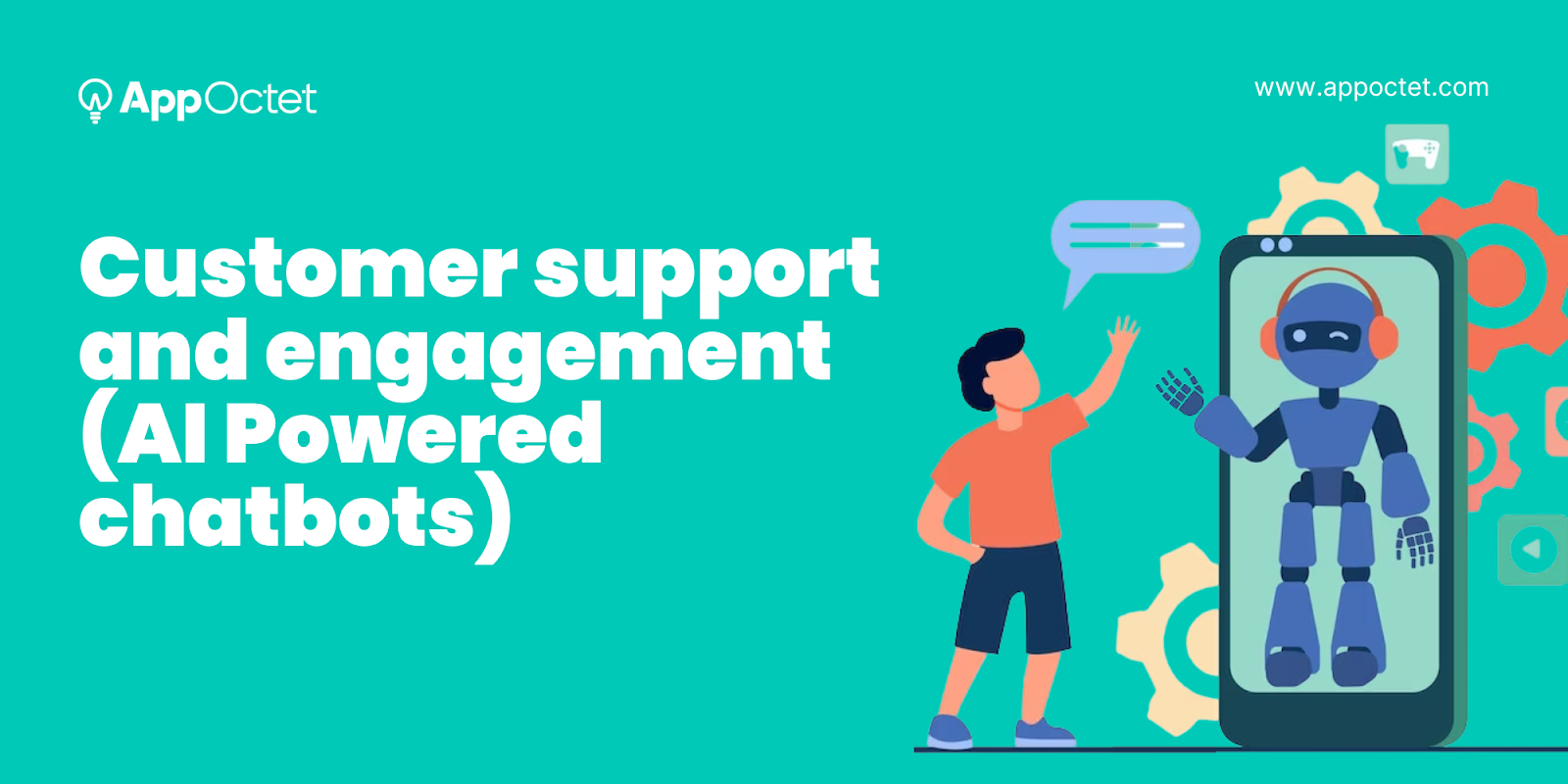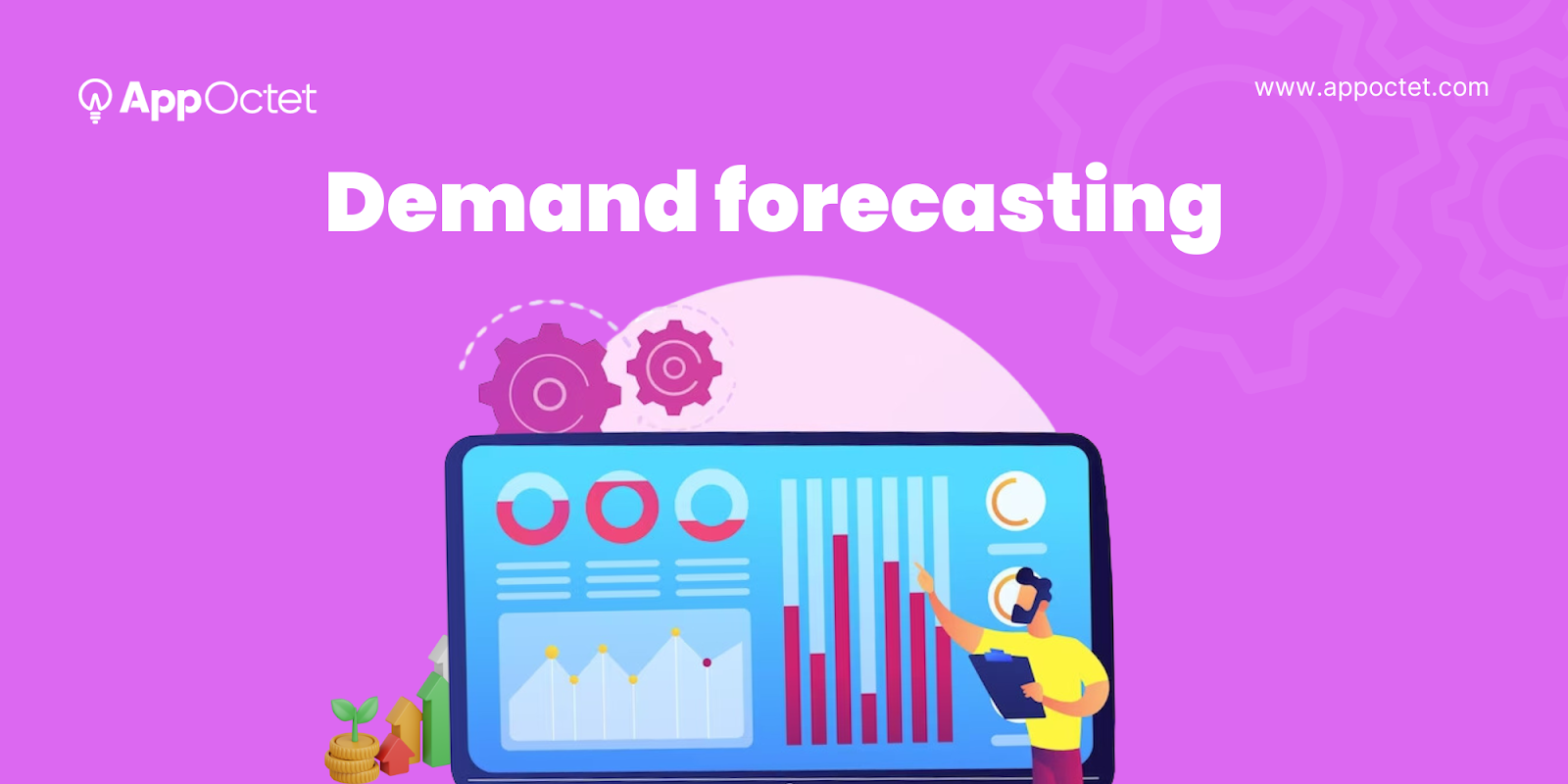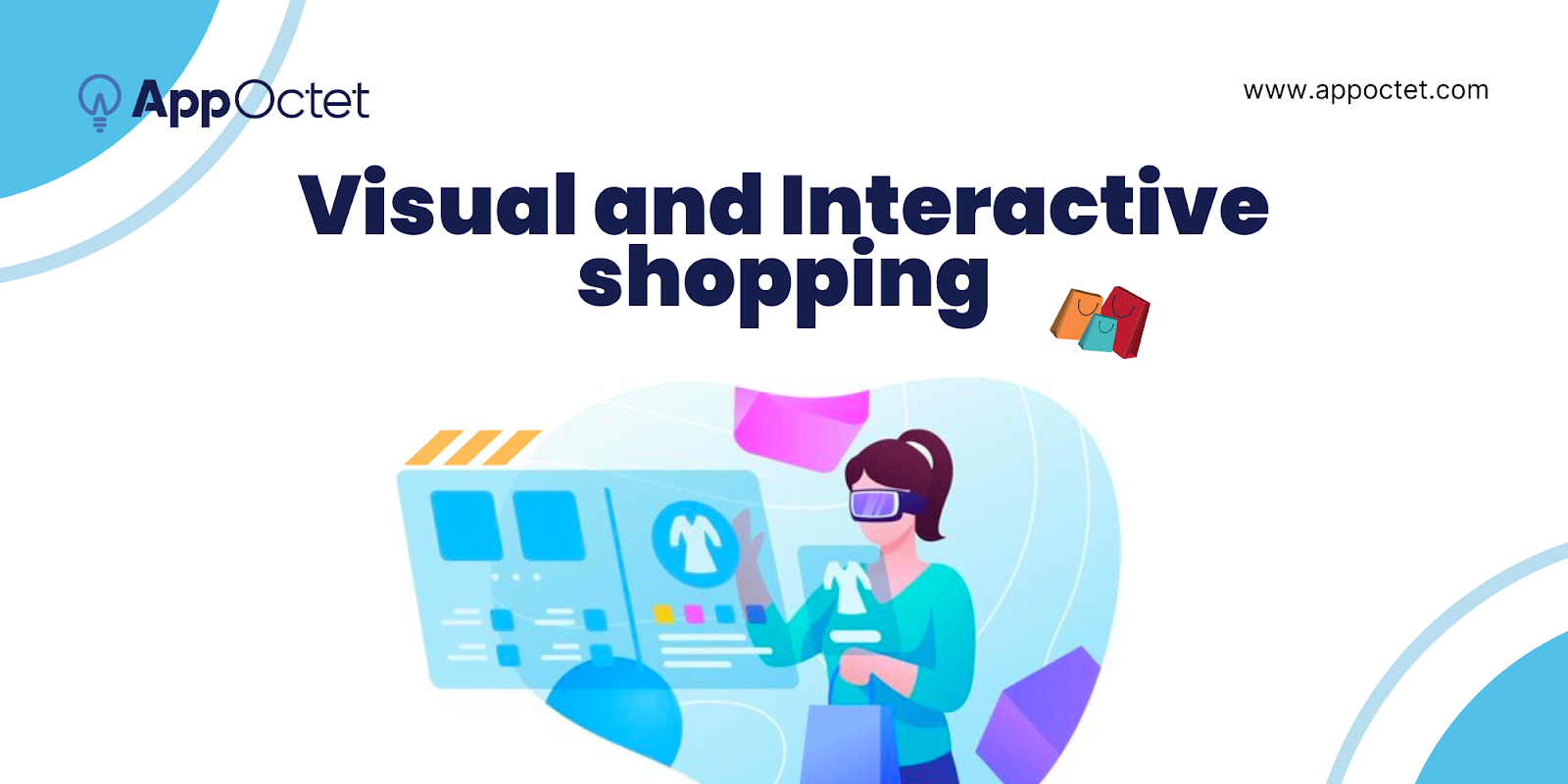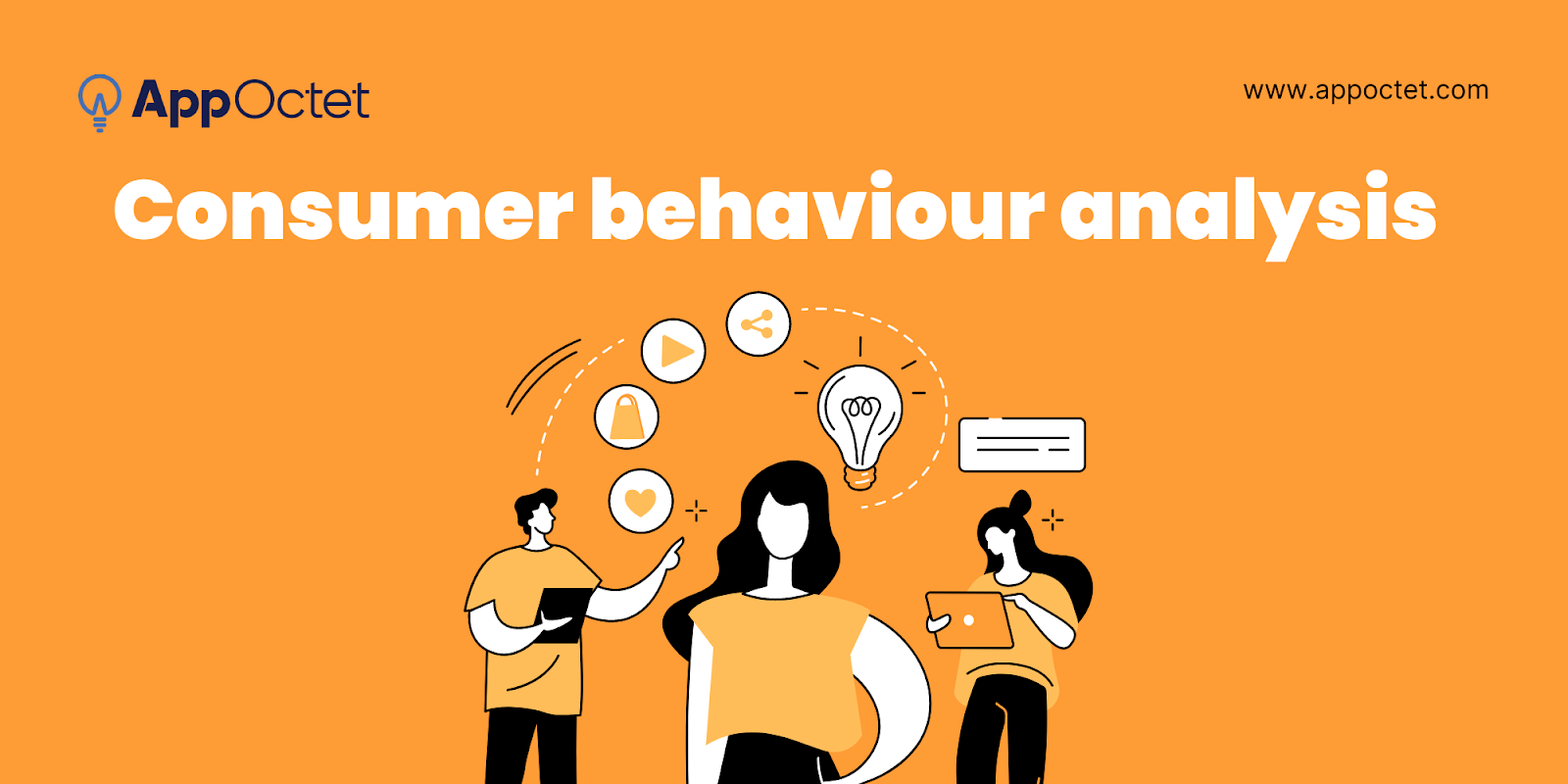AI in e-commerce has emerged as a powerful force, revolutionising the way online businesses operate and customers interact. AI in e-commerce has unlocked game-changing use cases that have completely changed the e-commerce landscape thanks to its capacity to process enormous amounts of data and apply advanced algorithms.
Introduction
This blog delves into the game-changing use cases of AI in e-commerce, highlighting how this innovative technology has transcended traditional boundaries to drive efficiency, personalisation, and customer satisfaction. In the ever-evolving landscape of eCommerce, AI in e-commerce has emerged as a transformative force, revolutionising the way businesses operate and engage with their customers. One of the most prominent use cases is AI-powered recommendation systems, which analyse customer behaviour to offer tailored product suggestions, enhancing user engagement and conversion rates. AI-driven chatbots provide real-time customer support, addressing queries and concerns promptly, while AI’s predictive analytics aid in demand forecasting and inventory optimisation. Fraud detection mechanisms powered by AI algorithms bolster security, protecting both consumers and businesses from potential threats. As this technology continues to advance, exploring the multifaceted ways AI in e-commerce can streamline processes, enhance customer satisfaction, and drive growth.
AI has numerous valuable use cases in the eCommerce industry. Here’s a breakdown of use cases and products of AI in e-commerce:
1. Personalisation and Customer Experience

Personalised Product Recommendations: AI algorithms are used in personalised product recommendations by analysing a user’s previous browsing history, preferences, and behaviour. This makes it possible for AI in e-commerce platforms to make product recommendations that are customised to user preferences, increasing user engagement and boosting sales by displaying goods that are most likely to appeal to each buyer.
Here are four examples of platforms that use personalised product recommendations:
1. Netflix: Suggests TV shows and movies based on your viewing history, helping you discover content tailored to your preferences.
2. Spotify: Recommends songs and playlists based on your listening habits, introducing you to new music that matches your taste.
3. YouTube: Offers video recommendations based on your watch history, guiding you towards content that aligns with your interests.
4. LinkedIn: Offers job and connection recommendations based on your professional experience and network, aiding career growth and networking.
This aligns with the trends in personalised, hassle-free purchasing by boosting purchase confidence, lowering returns, and improving the online shopping experience.
Dynamic Pricing: Dynamic pricing is a strategy in which prices for goods and services are changed in real-time in response to demand, competition, and consumer behaviour. By offering different pricing at different times, this strategy enables enterprises to maximise earnings while remaining sensitive to market variations.
Visual Search: Visual search is an AI-powered technology that enables users to search for information or products using images as input. By analysing visual features and patterns, the system identifies and retrieves relevant items, streamlining the search process and enhancing the user experience in various applications.
1. Google Lens: Google’s visual search tool that uses smartphone cameras to identify objects, text, and landmarks in India.
2. Myntra’s Image Search: Allows users to find fashion products on Myntra by uploading images, aiding shopping decisions.
Virtual Try-On and Fitting: Virtual Try-On uses AI to enable customers to virtually try on apparel and accessories before making a purchase. It creates simulations of how objects would appear or fit by examining user pictures or videos. For eg,
1. Lenskart’s “3D Try-On”: A virtuall try-on feature for eyewear, allowing customers to see how glasses look before buying.
2. Nykaa’s “Virtual Mirror”: A makeupp try-on tool enabling users to test cosmetics virtually and find suitable shades.
Natural Language Processing (NLP) for Enhanced Search: Natural Language Processing (NLP) gives search engines the ability to understand and interpret human language for more precise and user-friendly search results. NLP improves search by offering relevant content and comprehending user intent by analysing the context, intent, and sentiment behind user queries. This finally optimises the search experience.
2. Customer Support and Engagement

AI-Powered Chatbots: AI-powered chatbots are intelligent virtual assistants that use Artificial Intelligence to engage in real-time conversations with users. By analysing input and using pre-trained models, they provide accurate responses, assist with inquiries, offer support, and even perform tasks. These chatbots enhance customer experiences by providing instant and personalised interactions on e-commerce platforms.
ChatGPT by OpenAI, Watson Assistant by IBM, Dialogflow by Google are some of the major AI-Powered chatbots
Automated Customer Service Responses: Automated customer service responses utilise AI-driven systems to instantly address customer queries and concerns. These systems employ pre-set responses and natural language processing to provide efficient and timely assistance, enhancing customer satisfaction while freeing up human agents for more complex tasks.
Virtual Assistants for Customer Queries: Virtual assistants are AI-enabled systems that provide real-time customer care for online shoppers. They offer precise and prompt solutions by examining user queries and previous interactions, improving user experiences. These assistants streamline customer service by rapidly and effectively resolving issues, which increases happiness and strengthens brand loyalty.
Real-Time Customer Support: AI-driven chatbots and live operators are used in real-time customer care to respond to customers’ questions, problems, and concerns right away. This technology offers rapid and effective solutions by instantly analysing and responding to issues, increasing customer happiness and involvement in the e-commerce experience.
3. Inventory and supply-chain management using AI in e-commerce

Demand Forecasting: Demand forecasting is the process of predicting future customer demand for products or services. It involves analysing historical data, market trends, and external factors to estimate the quantity of goods needed. Accurate demand forecasting helps businesses optimise inventory, plan production, and ensure adequate supply, ultimately enhancing operational efficiency.
Inventory Optimization: Inventory optimization is a strategic approach that leverages data and algorithms to ensure businesses maintain the right amount of inventory. By predicting demand, supply chain disruptions, and market trends, companies can again minimise excess stock, reduce costs, and enhance customer satisfaction by meeting demands promptly while avoiding overstock or stockouts.
Supply Chain Automation: Supply chain automation involves using technology, such as AI and robotics, to streamline and optimise various processes within the supply chain. This includes tasks like inventory management, order processing, and distribution. By minimising manual intervention, automation enhances efficiency, reduces errors, and ensures smoother end-to-end operations.
Did you know that 35% of businesses have already integrated AI into their operations? Additionally, a significant 42% are actively considering implementing AI in the near future. This growing trend reflects the increasing recognition of AI’s potential to enhance efficiency, innovation, and decision-making across various industries.

4. Security and Fraud Prevention
Fraud Detection Algorithms: Fraud detection algorithms are specialised computer programmes that look for unusual or suspect activity within a system using data analysis and pattern recognition. These algorithms quickly identify potential fraudulent actions by comparing ongoing transactions to known patterns of legitimate behaviour, assisting in the prevention of financial losses and ensuring security.
For eg, 1. Multi-Factor Authentication: Combining multiple verifications (e.g., password, code) for stronger account access security.
2. Encryption: Safeguarding data during storage and transmission through coded protection.
3. Regular Audits: Periodic checks of transactions to spot irregularities or discrepancies.
4. Employee Training: Teaching staff security practices and recognizing potential fraud signs.
5. Fraud Detection Software: Monitoring transactions for unusual patterns indicating possible fraudulent activity.
Payment Security: Payment security refers to protective measures implemented to safeguard sensitive financial information during online transactions. It involves encryption, tokenization, and authentication methods to prevent unauthorised access and fraud. These measures ensure that payment data remains confidential and secure, assuring customers of safe and trustworthy e-commerce transactions.
User Authentication: User authentication is the process of verifying the identity of a user to grant access to a system or application. It involves validating credentials like usernames, passwords, or biometric data. Successful authentication ensures that only authorised individuals can access protected resources, enhancing security and privacy.
5. Visual and Interactive shopping using AI in e-commerce

Image and Video Recognition: Image and video recognition refer to the technology that enables computers to identify and interpret visual content. Through deep learning and pattern recognition, algorithms analyse images and videos, allowing machines to recognize objects, scenes, people, and even emotions, facilitating applications like self-driving cars, security surveillance, and content organisation.
Virtual Shopping Experiences: Customers may explore and engage with things online thanks to virtual shopping experiences that make use of technologies like augmented reality. Consumers can digitally try items before making a purchase and visualise products in their real-world surroundings. This immersive strategy revolutionises the online shopping experience by increasing engagement and enabling shoppers to connect with products prior to purchase.
To know more about how AI in e-commerce is boosting business growth, read our blog here: https://appoctet.com/blogs/the-power-of-ai-in-ecommerce-businesses/
6. Data Analytics and Insights

Customer Behaviour Analysis: This involves studying the actions, preferences, and interactions of consumers to gain insights into their purchasing patterns and decision-making processes. Through data analysis and AI, businesses can better understand customer needs, tailor marketing strategies, and enhance overall user experiences.
Market Trends and Insights: Market trends and insights are the examination of existing and changing consumer behaviour patterns, market dynamics, and competitive environments. By keeping an eye on these trends, businesses are able to gather important data that helps them plan ahead, foresee changes, and adjust their tactics to meet the changing needs and tastes of the market.
Business Decision Support: Business Decision Support refers to the use of data, analytics, and technology to aid organisations in making informed and strategic choices. It involves collecting, analysing, and presenting relevant information to executives and managers, enabling them to assess options, predict outcomes.
7. Voice Commerce and Voice Search using AI in e-commerce

Voice-Activated Shopping Assistants: AI-powered gadgets called voice-activated shopping assistants let people make purchases by speaking commands. These artificial assistants can look for things, add items to shopping carts, and even finish transactions because they are fluent in normal language. They simplify the purchasing procedure while offering customers e-commerce convenience and hands-free use.
Samsung Bixby is one of the examples for voice-activated shopping assistants, it provides voice-guided shopping experiences, allowing users to explore products and make purchases using Samsung devices.
Voice Search for Products: Voice search for products involves using spoken language to initiate online searches for specific items. Users interact with voice-enabled devices, like smart speakers or smartphones, to verbally request products they want to buy. Advanced AI processes the request, retrieves relevant results, and presents them to the user, streamlining the shopping experience.
Conclusion
It has become apparent that AI is having a profound impact on the fast-paced world of eCommerce. AI improves customer experiences by making personalised recommendations that encourage loyalty and increase revenue. Predictive analytics-driven, effective inventory management reduces stockouts and surpluses while maximising resources. Real-time support is provided through chatbots that are powered by AI, improving engagement and customer service. Additionally, data-driven insights from AI enable precise pricing and demand forecasting techniques, boosting sales. Algorithms for detecting fraud increase security and guarantee secure transactions. As AI develops, its extensive integration in eCommerce highlights its potential to completely transform the sector, making operations smarter, more fluid, and more successful.
Embracing AI’s potential and leveraging its capabilities is crucial for businesses seeking to thrive in the ever-evolving digital marketplace. Stay one step ahead of the competition, delight customers, and supercharge sales.